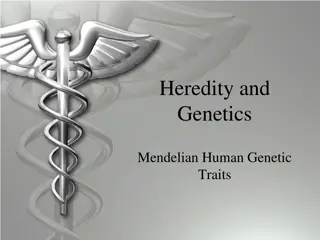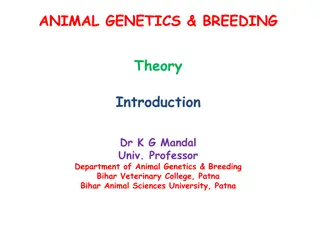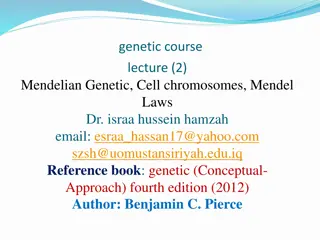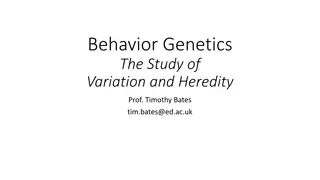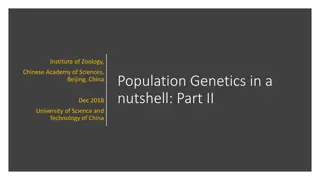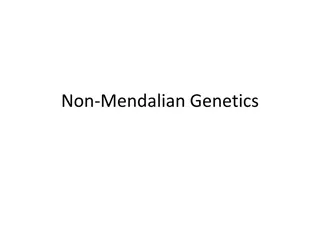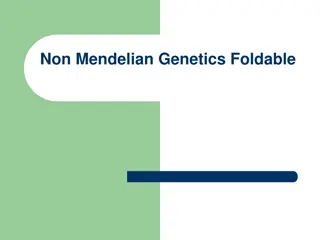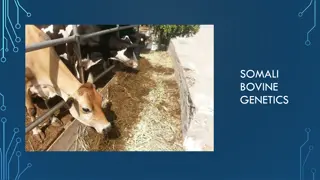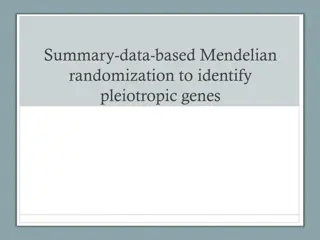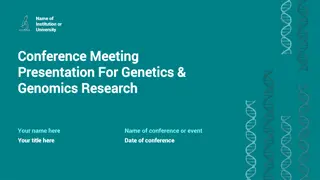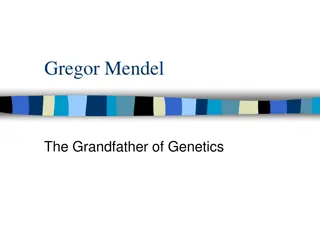
Understanding Mendelian Genetics: Heritable and Environmental Sources of Variation
Explore the concepts of Mendelian genetics in this review, focusing on the distinction between environmental and heritable sources of variation. Learn how traits are passed down from parent to progeny and the interaction between genetic and environmental influences. Discover the significance of heritable variation in plant breeding and the roles of plant breeders versus geneticists in the field of genetics.
Download Presentation

Please find below an Image/Link to download the presentation.
The content on the website is provided AS IS for your information and personal use only. It may not be sold, licensed, or shared on other websites without obtaining consent from the author. If you encounter any issues during the download, it is possible that the publisher has removed the file from their server.
You are allowed to download the files provided on this website for personal or commercial use, subject to the condition that they are used lawfully. All files are the property of their respective owners.
The content on the website is provided AS IS for your information and personal use only. It may not be sold, licensed, or shared on other websites without obtaining consent from the author.
E N D
Presentation Transcript
Review of Mendelian Genetics PLS 664 Spring 2011
Environmental vs Heritable Sources of Variation Environmental Sources Soil, temperature, light: reflected in vigor Photoperiod: plant may or may not flower Seed size: smaller seedlings from smaller seeds than from larger, but they are genetically identical Yield of two plants from the same variety will vary if one is infected with rust, the other not Because these variations are environmental in nature they cannot be transmitted to progeny
Environmental vs Heritable Sources of Variation Heritable Sources Easily observed: color, amt of pubescence on leaves, awns vs awnless These characteristics (traits) are reproducible in the progeny Complex: vigor, disease resistance, plant height, plant yield Progeny of these plants may express these traits to a greater or lesser extent than the parents
Environmental vs Heritable Sources of Variation Interaction of heritable and environmental sources of variation Wheat plant that is genetically resistant to leaf rust requires the presence of the pathogen (environment) to exhibit the trait Winter hardy oat requires the right environment (cold stress) to demonstrate presence of the trait
Heritable Variation Heritable variation is essential to the plant breeder; without it, there could be no progress from plant breeding What is the breeder looking for? Qualitative traits: discrete, simply inherited Quantitative traits: continuous, complex inheritance
Plant Breeders vs Geneticists Plant breeders focus on traits of economic importance and how these traits can be combined in a superior variety Geneticists focus on understanding and illuminating the mechanisms by which traits are inherited and further, the molecular underpinnings of these traits and/or genes.
Genes the units of Inheritance Genes occupy positions or loci on chromosomes Genes are expressed in various allelic forms; while multiple alleles are possible, we will usually think in terms of two alleles (eg. A vs a) per locus
Genes the units of Inheritance Plants with two copies of the same allele (AA or aa) are homozygous at that locus Plants with different alleles (Aa) are heterozygous at that locus The genetic constitution of an individual at a given locus (eg. AA) is the genotype of the individual
Chromosomes In somatic diploid cells, homologous chromosomes pair, one of the pair having come from the maternal parent, one from the paternal parent During reproduction, haploid gametes are formed This represents the mechanism by which genes are transmitted from parents to progeny.
Inheritance of Simple Traits: Hooded x Awned Barley X
Parental, F1 and F2 Generations In the cross of a Hooded X Awned Barley
The progeny test tells the breeder the genotype of the plant of interest. Is the variation heritable? If so, is it true breeding (homozygous), or will more selection and purification be required? Progeny Test The progeny of the plant tells the breeder more about the plant than the plant itself.
More than one Trait Oderbrucker barley: rough awns Lion barley: smooth awns, black hulls Goal: a smooth awned barley with white hulls
Linkage Genes on the same chromosome may not sort independently from one another This requires a larger population size to recover the recombinant types
2 row, purple lemma x 6 row, white lemma barley X
Punnett Square Shows F2 Genotypes and Their Frequencies
Observed vs Expected (O-E)2/E Observed No. (O) Expected No. (E) Genotype A_B_ 284 214.3 22.67 A_bb 21 71.4 35.58 aaB_ 21 71.4 35.58 aabb 5 23.8 40.9 381 380.9 134.72
Chi Square Test Null hypothesis: genes are independent Degrees of freedom (df) = no. classes-1=3 Chi square statistic 20.05 = 7.82 Since our calculated 2 = 134.72 we reject the null hypothesis
Trihybrid Testcross Recombinant events No crossover Gametes Testcross progeny 401 409 32 ABC abc Abc Crossover in AB region aBC Abc 28 6.1 Crossover in BC region abC AbC aBc 64 2 3 1000 Crossover in both
Recombination Frequency Between A and B: Parental types (ABC, ABc, abC,abc)=(401+61)+(64+409)=935=93.5% Recombinant types (AbC,Abc,aBC,aBc)=(2+32)+(28+3)=6.5% Do on your own: calculate recombination between B and C


